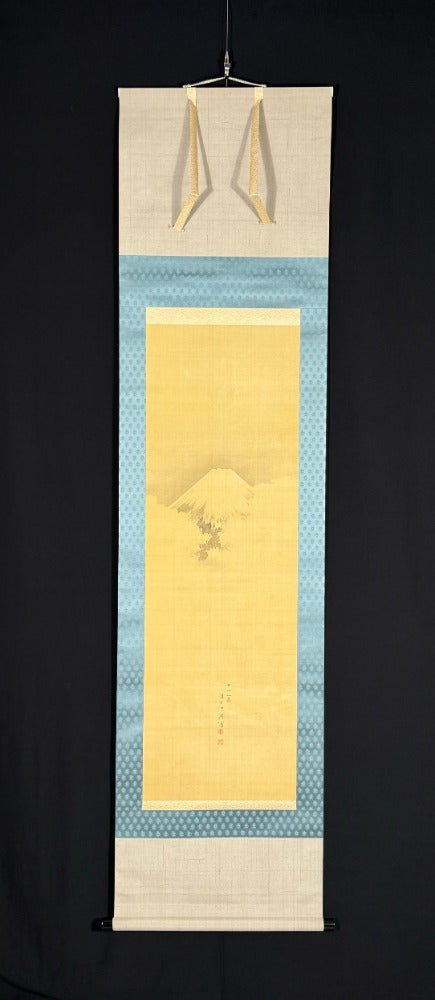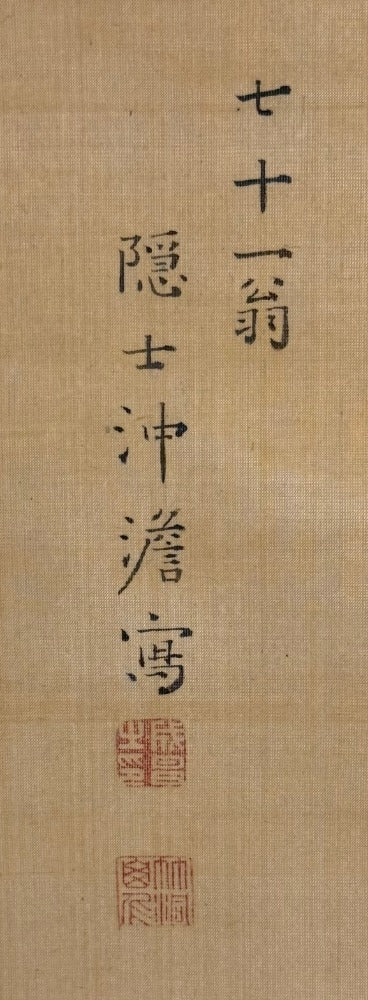Guignard Kyoto Collection
Fuji 富士山 | Nakabayashi Chikudō (Chikutō) 中林竹洞 | 1776-1853
Fuji 富士山 | Nakabayashi Chikudō (Chikutō) 中林竹洞 | 1776-1853
Couldn't load pickup availability
Chikudō came from Nagoya, which could not exactly be described as an important art center in Japan during the Edo period (1603-1867). He was the son of a doctor and, together with his famous colleague Yamamoto Baiitsu (1783-1856), was lucky enough to have access to an important collection of Chinese art belonging to a wealthy dealer. There, both painters trained with copies of Chinese art from the Ming period (1368-1644) and the Ching period (1644-1912).
In 1803 he then moved with his colleague Baiitsu to the cultural capital of Kyoto, where he used his training and knowledge of Chinese art and became the founder of the so-called nanga school, a style of Japanese painting with Chinese motifs that dates back well into the 19th century . was of eminent importance and significantly enriched the stylistic landscape of Japanese painting.
This depiction of Fuji-san, however, is entirely Japanese; A Chinese touch could only be recognized by the adherence to the central axis, because the Chinese have always loved symmetry in their art forms. Even the signature and the statement that Chikudō painted the picture when he was 71 years old is placed centrally. Chikudō chose an artist name that also seems quite Chinese (with the 2nd character): Chūtan 沖澹. But the meaning of the name - “calm sea” - fits wonderfully with the sublime silence of the cloudy mountain of the Gods.
The mounting of the scroll painting is probably more recent; the blue of the surround ( chūmawashi ) is a shiny sky-blue silk that underlines the elegance of the painting.









